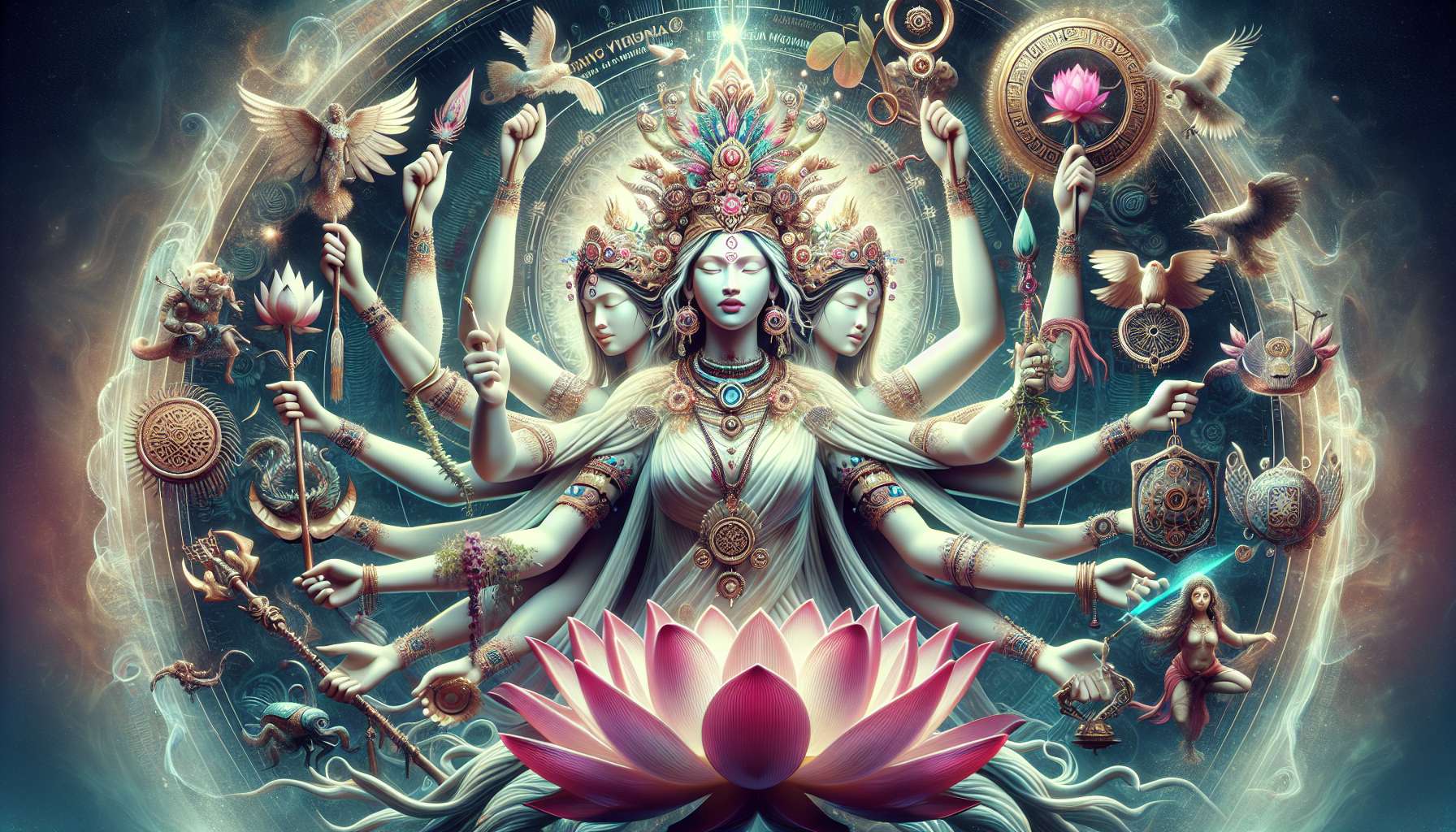Female Archetypes in Different Cultures
Female archetypes represent universal and timeless representations of different facets of the female psyche. They are found in myths, tales, religions worldwide. They embody qualities, challenges, and life stages that any woman can identify with.
Among the most well-known archetypes, we can mention:
– The Mother: nurturing, protective, she embodies unconditional love and generosity. We find her in figures like the Virgin Mary in Christian tradition, Isis in Egyptian mythology, or Yemaya in African Santeria.
– The Virgin: she represents purity, innocence, un-manifested potential. Persephone in Greek mythology before her abduction by Hades, or Guanyin the goddess of compassion in Buddhism are examples.
– The Lover: sensual, passionate, creative, she embodies life energy and the power of seduction. Aphrodite among the Greeks, Oshun in the Yoruba pantheon or the Nagini, snake deities in Hinduism, illustrate this archetype.
– The Warrior: courageous, determined, she fights for her convictions and knows how to set limits. Athena, goddess of war and wisdom in Greek mythology, the Amazons, independent warrior women, or Durga fighting demons in Hinduism are notable figures.
– The Shaman: healer, medium, she is connected with invisible forces and guides her clan. We find her through the Sybil of Antiquity, the priestesses of the Goddess in pagan traditions, or the medicine women in Native American cultures.
– The Sage: mature, listening to her inner wisdom, she shares her experience with discernment. Hestia keeping the sacred hearth fire in Greek mythology, Sophia embodying divine wisdom in Gnostic Christian tradition, or Kuan Yin goddess of compassion and mercy in Chinese Buddhism reflect this archetype.
Each woman carries within her these different faces which express themselves more or less depending on stages of her life. Thus, the Virgin archetype may be predominant in adolescence, the Mother when having children, the Sage with maturity… But all are present within us and form our unique identity.
Recognizing and honoring these different facets is a path to balance and self-realization. This allows us to not identify with a single role but to embrace our full complexity. Thus, a mother can also express her Lover aspect, a warrior her vulnerability…
Traditional cultures have long understood the importance of these archetypes in psychic development. Passage rites marking the major stages of feminine life (puberty, motherhood, menopause…) allowed for their conscious integration. Today, this work of individuation is more often a personal endeavor.
Meditating on these figures, creating altars to honor them, practicing rituals are ways to connect to their energy. Observing dreams, the way these archetypes manifest there, is also very revealing of where one is. A woman who often dreams of fighting may need to develop her inner warrior, for example.
Beyond personal work, reconnecting with these archetypes is also a political act. In a society where female models are often reduced to stereotypes (the perfect mother, the seductress, the career woman…), connecting with these ancestral representations is a way to reclaim one’s power.
Integrating the wisdom of female archetypes is therefore a wonderful tool for self-knowledge and healing. By connecting to these forces that transcend and inhabit us, we align ourselves with a lineage of free and sovereign women.
Key points:
– Female archetypes are universal and timeless representations of various aspects of the female psyche, found in myths, tales, and religions all over the world.
– Among the main archetypes are: the Mother, the Virgin, the Lover, the Warrior, the Shaman, and the Sage. Every woman carries within her these different faces that express themselves at different moments in her life.
– Recognizing and honoring these different facets is a path to balance and self-realization, allowing one to embrace her full complexity.
– Traditional cultures have understood the importance of these archetypes for psyche development through rites of passage. Today, this work is more of a personal endeavor (meditation, altars, rituals, dream observation).
– Reconnecting to these archetypes is a political act, allowing one to reclaim her power against society’s reducing stereotypes.
– Integrating the wisdom of female archetypes is a tool for self-knowledge, healing, and aligning oneself with a lineage of free and sovereign women.
👉 To download docx (Editable) file click here : Click here
👉 To download PDF file click here : Click here
👉 To download MP3 file click here : Click here







